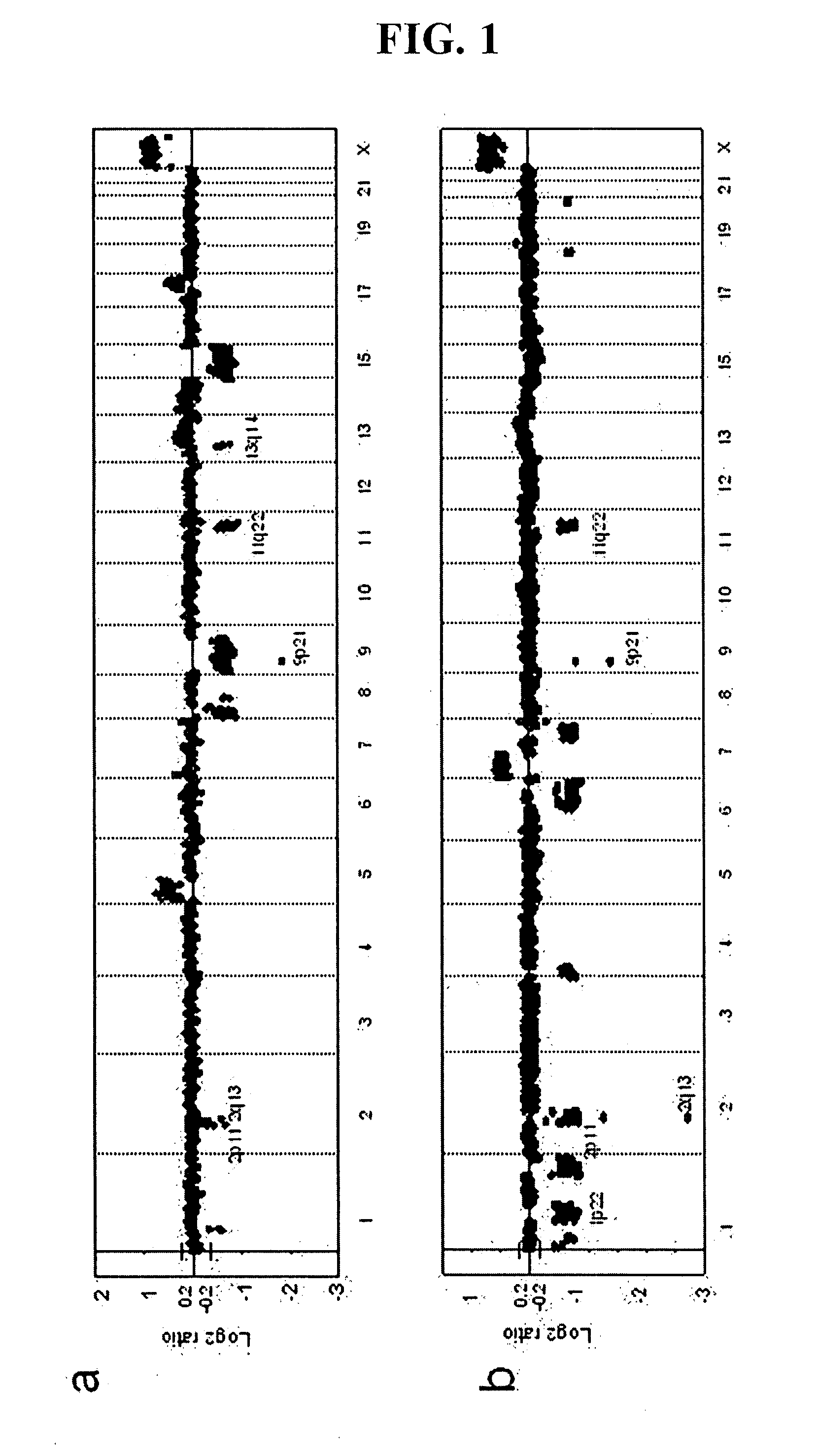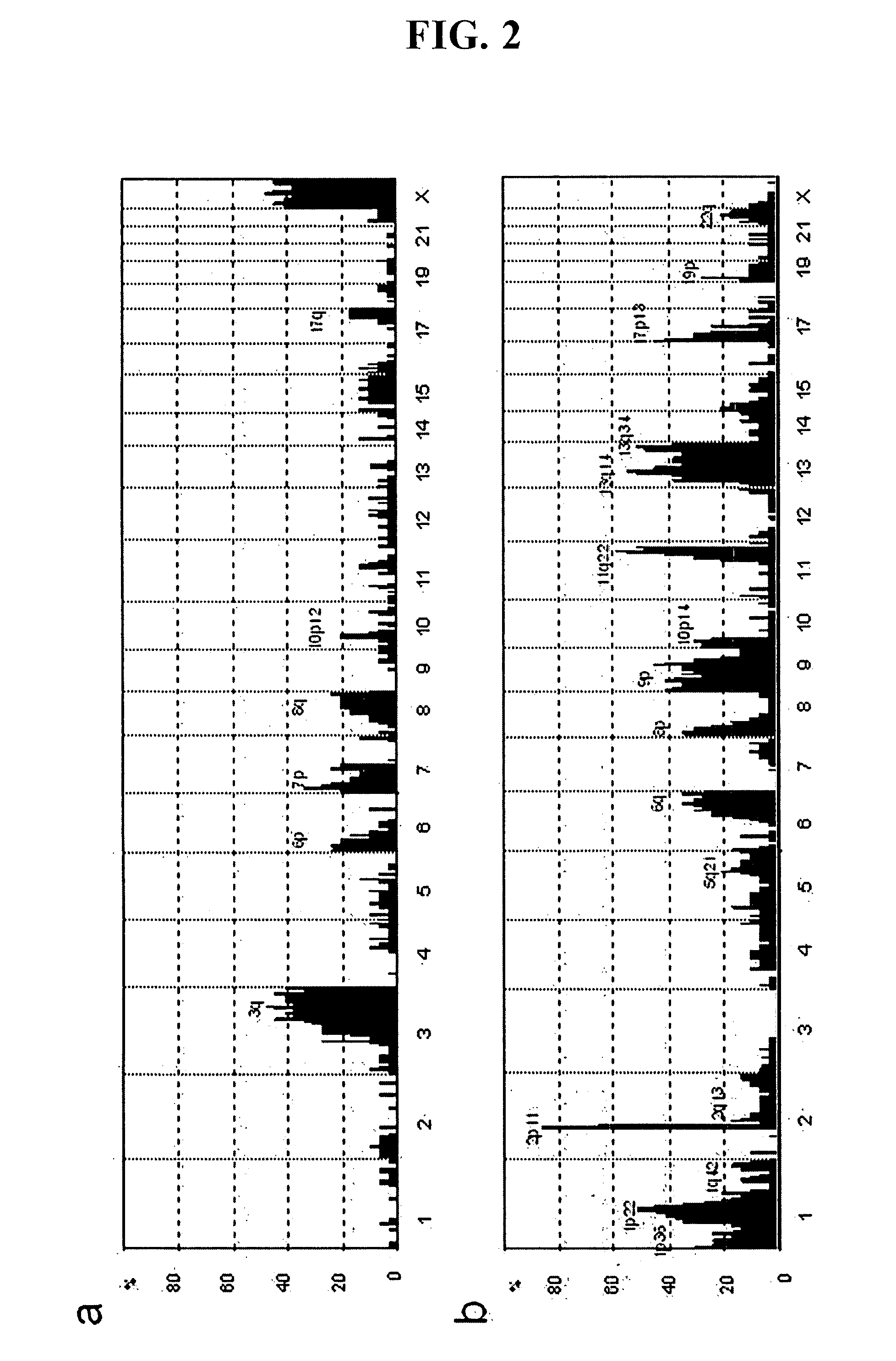Methods for Diagnosis and Prognosis of Malignant Lymphoma
a malignant lymphoma and prognosis technology, applied in the field of malignant lymphoma, can solve the problems that the type and pathologic conditions of mcl have not been studied in detail, and the translocation alone is not sufficient to cause tumorigenic transformation, and achieve good prognosis
- Summary
- Abstract
- Description
- Claims
- Application Information
AI Technical Summary
Benefits of technology
Problems solved by technology
Method used
Image
Examples
example 1
1. Materials and Methods
[0083] 1-1. MCL Patients and Samples
[0084] Tumor specimens obtained from 29 MCL cases, comprising 16 males and 13 females all from the Aichi Cancer Center, were included in the study. Twenty-four cases were classified as typical and five as blastoid variants. The median age of the patient was 67 years (49-92 years old). Eighteen out of 27 cases (67%) were leukemic (data of 27 cases were available), 27 out of 29 cases (93%) were in an advanced stage III-IV, eight out of 27 cases (30%) had elevated LDH (data of 27 cases were available), five out of 28 cases (18%) had a poor performance status (data of 28 cases were available), and 21 out of 27 cases (78%) had more than one extranodal site of involvement (data of 27 cases were available). The immunophenotype of the tumors was determined by immunohistochemistry for tissue sections and / or flow cytometry for cell suspensions. These studies used Ig light and heavy chains, several B-cell (CD19, CD20, CD22, CD45RA a...
example 2
Relationship Between Genomic Aberrations and Prognosis
[0129] With respect to MCL specimens in 29 cases as in Example 1, relationship with prognosis was examined. FIG. 6 shows prognosis curves for gain or loss of specific clones. That is, with respect to 29 cases, the relationship between specific gains or losses and prognosis (survival state) was examined using Kaplan-Meier survival curves and the log-rank test. FIG. 6 shows Kaplan-Meier survival curves. The abscissa represents the number of days of survival, and the ordinate represents the survival probability. As shown in FIG. 6, cases with 6p21 (BAC, RP11-60019) loss (6 cases) had a significantly better prognosis (P=0.0152) than those without loss (23 cases). Furthermore, cases with 8p23 (BAC, RP11-240A17) loss (9 cases) had a significantly poorer prognosis (P=0.0001) than those without loss (20 cases), and cases with 8q24 (RP11-1136L8) gain (5 cases) had a significantly poorer prognosis (P=0.0084) than those without gain (24 ca...
PUM
| Property | Measurement | Unit |
|---|---|---|
| temperature | aaaaa | aaaaa |
| temperature | aaaaa | aaaaa |
| temperature | aaaaa | aaaaa |
Abstract
Description
Claims
Application Information
 Login to View More
Login to View More - R&D
- Intellectual Property
- Life Sciences
- Materials
- Tech Scout
- Unparalleled Data Quality
- Higher Quality Content
- 60% Fewer Hallucinations
Browse by: Latest US Patents, China's latest patents, Technical Efficacy Thesaurus, Application Domain, Technology Topic, Popular Technical Reports.
© 2025 PatSnap. All rights reserved.Legal|Privacy policy|Modern Slavery Act Transparency Statement|Sitemap|About US| Contact US: help@patsnap.com



